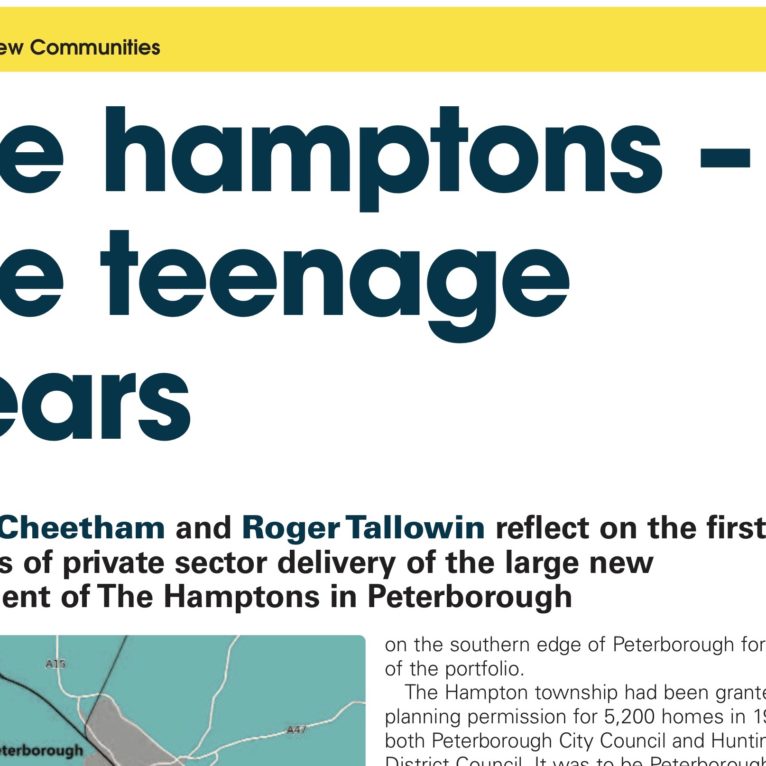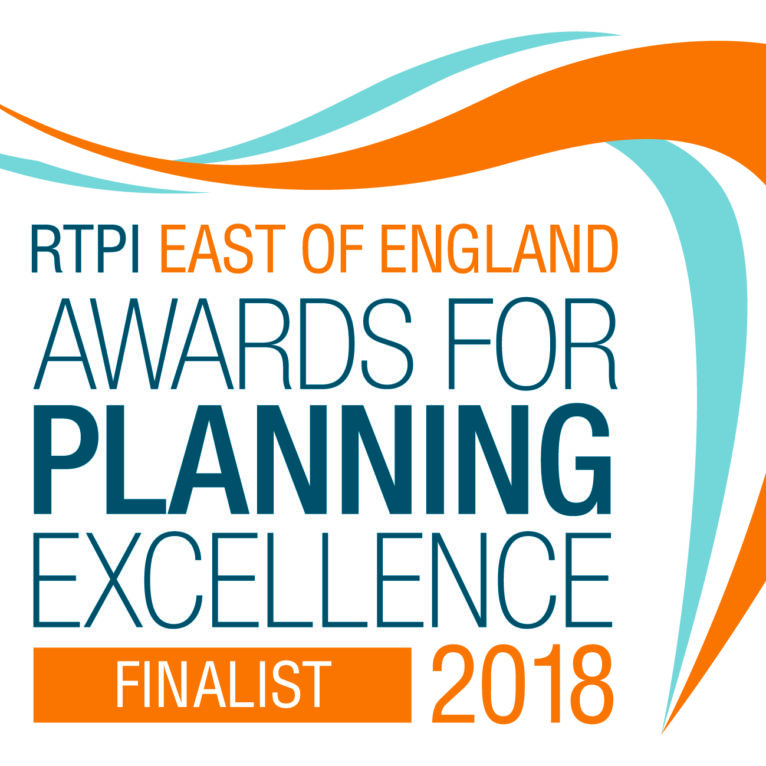
Share article:
Tags:
I don’t know how many of you were around in 1986 and can remember the international excitement about seeing Halley’s comet whizz across the night sky? It will be back in 2061 in case you missed it. But I feel a bit like that about the Ox-Cam Arc…. The timescales are different of course but we seem to have been in a fluctuating state of excitement followed by inactivity for the last 25 years!
Yes, I did say 25 years so I’m going to start with a trip down memory lane…
As a junior planner at Aylesbury Vale District Council, in the late 1990s I was sent to a meeting in place of my boss to take some notes. I went to the old BT office in Milton Keynes where a workshop was being held to discuss the Ox-Cam Arc. “O2C” was what it was referred to at the time and I recall that the workshop outputs being pretty difficult to grasp. It was an area, but not an allocation, it was a place but more of a concept of place, an idea of what could be; to attract investment. I can’t find my notes but can imagine that there were quite a few question marks. Perhaps we’re still struggling a bit to define it…
What I remember clearly is the feeling in the room. Officers and agents from across the area excited to be thinking about the potential of the Arc and what their role could be in realising it. In the early 2000’s we witnessed the Office of the Deputy Prime Minister and then the Department for Communities and Local Government trying to tackle the housing crisis. There was the 2003 Sustainable Communities Plan which tried to tackle it head on, shortly followed, in this geography, by the 2005 Milton Keynes and South Midlands Sub Regional Strategy which might have been the last document to seek to impose top down housing targets before the guillotine came down on regional planning and we were faced with the challenge of localism.
For several years, all talk of anything “regional”, “strategic”, “spatial” or ‘county-wide” was a political and planning ‘no go’ zone. Which is why, when I fast forward to 2018 and recall speaking at this conference there was such palpable excitement about the prospect of planning strategically again. It was inspiring to be able to think about cross-boundary infrastructure projects and to speculate about sustainable locations for growth and innovation that could feature on an international stage.
It came off the back of the National Infrastructure Commission’s Idea’s Competition where groups submitted thematic concepts for how the Arc could be positioned. Then, in February 2021, in the depths of the pandemic, hope again in the form of ‘Planning for Sustainable Growth in the Oxford-Cambridge Arc: an introduction to a Spatial Framework’– the first of its kind – which would guide how development should come forward at a pan-regional level and have the same policy status as the NPPF. And look at the quote… recognition of the need to plan holistically – it wasn’t a perfect document but it had the basis for something really good. For planners working in this geography, it was (well, could have been, could still be) ground-breaking!
As we all know, the Spatial Framework has not stuck to programme. The Government have not been explicit but surely a Spatial Framework is now unlikely to be progressed in the promised form? One might argue that the country has bigger problems to solve than writing a spatial framework for middle England. It would be hard to argue that we need ‘levelling up. But let’s think about this for a moment…
All the talk at the moment is about how economic growth is the way out of so many of our national problems. And, isn’t that what the Arc is about? Forging ahead and creating a new economic future outside of the EU and with new trading partners. Building on the internationally recognised brands of Oxford and Cambridge and creating an internationally recognised high-technology ‘Arc’. Frankly, this should be at the heart of Government policy.
Instead, we understand that the Government “remains committed to the Arc” (although they don’t like the name ‘Arc’ – good to know that they’re focussed on the important things) but that it is to be locally led. They have also rowed back on fixing housing growth as part of the Arc’s policy framework. Let’s just pause here… and think about sustainable growth, sustainable development and whether that can be achieved at scale if locally led.
Our industry is challenged by Government through the NPPF that we should be striving for sustainable development in all of our plans, policies, applications and decisions. If I dust off my uni text books from 1998 I am reminded that sustainable development is only achieved where we consider the relationship between the environment, economy and society and try to make plans and decisions that make things better and not worse. Its a beautifully simple concept and in this room, we are the guardians of this. The problem we face is that true sustainable development is not a vote winner and time and time again we see local political ambitions preventing sustainable growth strategies from being realised.
Earlier this year we witnessed the abandonment of Oxfordshire’s Plan for 2050. The leaders from each Council are very clear that agreement couldn’t be reached on housing numbers. In other words, why should the more rural district’s have to accommodate the housing needs arising from the burgeoning cities. I’m not singling out Oxfordshire. Every Local Plan examination across the Arc, probably across the country, echoes the same point. The old Aylesbury Vale, now Buckinghamshire is terrified of Milton Keynes breaching its boundary. I live 12 miles away from Milton Keynes and my neighbours ask me, do you think Milton Keynes will get this far? And every single public consultation event that I go to in Bedfordshire I am confronted with the same question, “why do we have to take Luton’s housing”?
Is it conceivable that a locally led strategy for the Arc can possibly reach agreement on a crossboundary housing strategy, and can it be considered a sustainable growth strategy if it doesn’t? I suggest that the answer to both questions is ‘no’! A thriving economy demands that the population is housed in high-quality housing where there are sustainable travel options and access to multi-functional green infrastructure. That is basic. Yet it seems that we might be facing a locally led policy framework that plans for economic growth and the highest standards for green infrastructure without a plan for housing because it is just too difficult and local leaders will never agree.
Let’s just take a moment to member the three aspects of sustainable development. Social, economic and environmental. We cannot set aside one because it is ‘too difficult’ and still achieve sustainable growth. How are we ever going to respond to the housing crisis in the staunchly Conservative northern home counties without top-down housing numbers? Its deeply, deeply irresponsible to continue to try to plan for long term strategic growth when the decision makers are only interested in short term political success. The idea that it is morally acceptable to preserve villages and towns in aspic – encouraging house prices to spiral upwards as demand outstrips supply is reprehensible. And this is happening on our watch!
Liz Truss recently declared that “housing must be built where it is wanted”. I have to assume that she is defining ‘want’ in relation to where existing communities will tolerate new housing rather than where new residents would like to live. Well, I can confirm from years of public engagement across the UK is that nobody wants housing anywhere near them. The deep-rooted idea that ‘an Englishman’s home is his castle’ exemplifies the problem. We have high home ownership rates and middle England is benefiting very nicely thank you very much from the value of their castles spiralling high. Why would anyone vote for that to change?
As a country, we need to flip the thinking on its head and think about housing provision as a necessary response to a basic human need. It is essential infrastructure and should be treated as such. In our post-Brexit role, I would suggest that we all need to think about the sort of country that we want to be and what our offer to the world would be in the case of another crisis like the war in Ukraine or a climate emergency in another part of the world. Do we really want our global response to be arms folded, moaning about migration rates and the fact that we don’t have enough homes for our own population? Surely not.
If nothing else, its deeply embarrassing on an international stage and the Arc could have such a strong international voice if it chose to use it. In this current political climate, we are not going to get the comfort of directions of growth and housing targets from which we can all hang local strategies onto. But that doesn’t stop the Arc from being more than simply a concept of a place. It is real. It is already happening. It is an economic powerhouse with amazing international opportunities within it. It could and should be central to any Governments’ sustainable growth agenda.
But what, as planners and developers, can we do in the absence of a framework that sets a truly sustainable growth agenda?
Here are some ideas…
- Reference the Arc in all your planning documents.
- Whenever you get the chance, remind local politicians of their wider geography and place in the Arc.
- Shout loudly about high quality new communities to break down the image of 1980s housing
- Talk about international investment in this area.
- Consider how residential development is necessary to deliver the 20% biodiversity net gain that the Arc is striving for.
- Keep a very close eye on the forthcoming Planning Bill – I think there are likely to be some very ‘unsustainable development’ ideas in there and the Government need to be held
accountable. Instead of accepting planning reform, let’s fight for political reform and local political responsibility.
In summary, keep the conversation about the Arc alive and remind politicians about their responsibility to house the population. We have serious issues facing the country and we need serious politicians to set policy directions to deal with them.
Sustainable growth in the Ox-Cam Arc is too important for the whole country to be allowed to fail because local politicians cannot agree on levels of housing growth.


